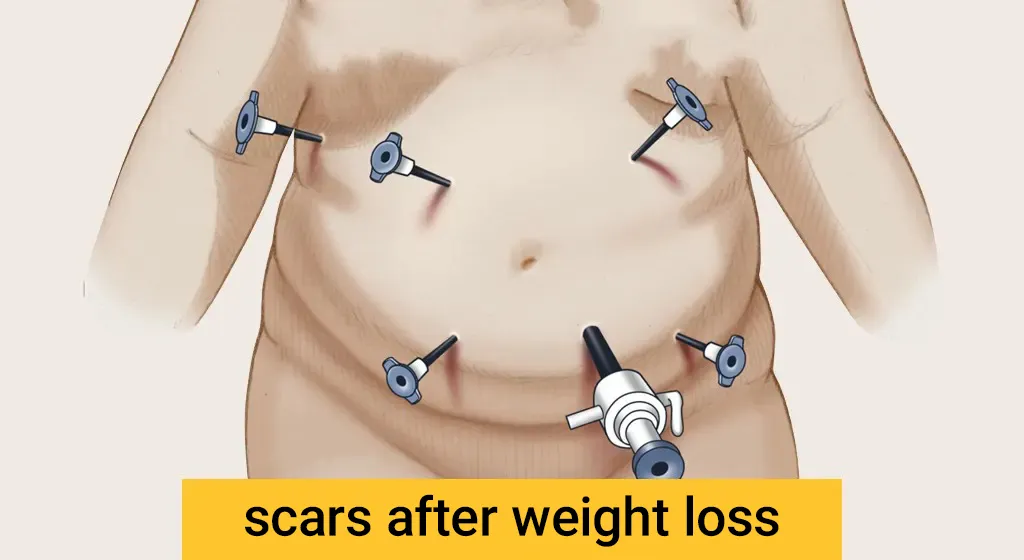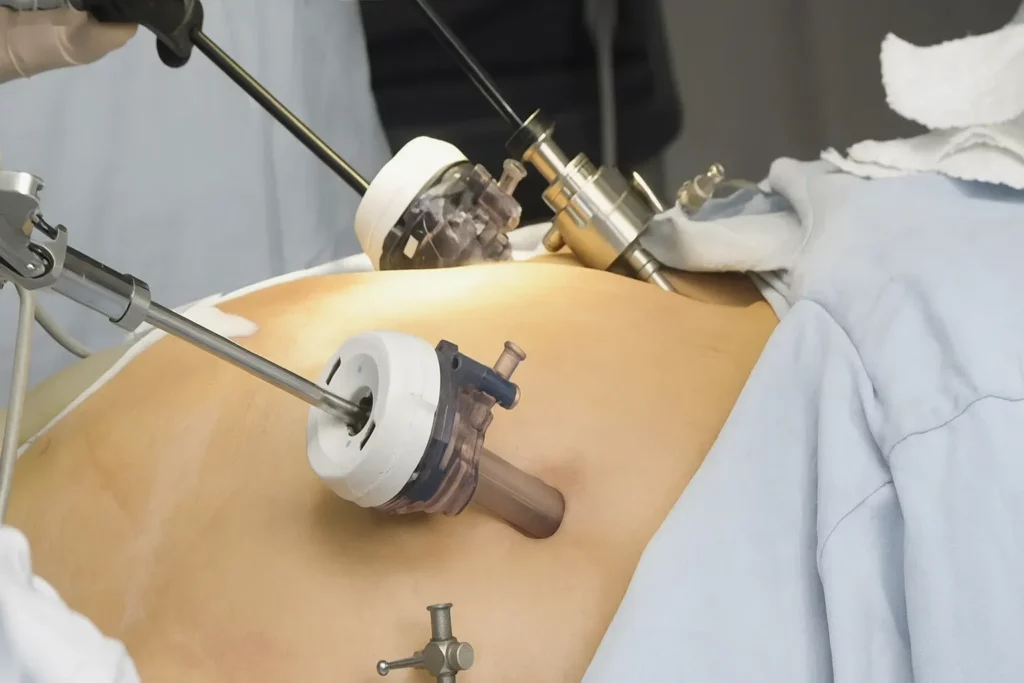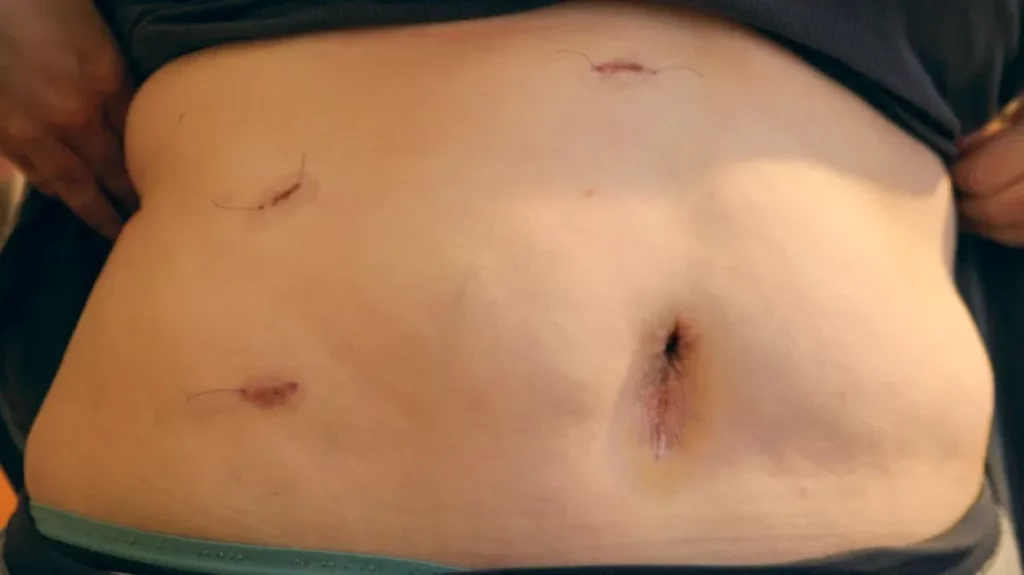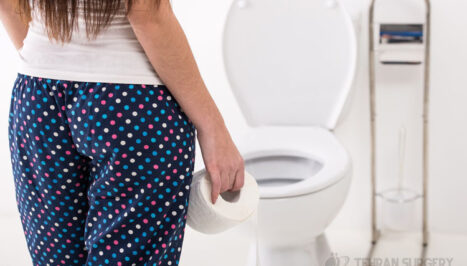Sleeve surgery scars

Modern surgical techniques, especially those performed in the abdominal area, are usually done using the laparoscopic method. In this technique, depending on the purpose of the surgery, several small incisions are made on the abdomen. These tiny cuts allow thin, long instruments to pass through the skin and access the abdominal cavity.
Weight loss procedures such as gastric sleeve surgery are also performed laparoscopically. Only a few very small incisions are made in different areas of the abdomen. In this article, we will explain everything you need to know about scars after weight loss surgery, how they form, and what you can do to help them heal faster.

Why Do Scars Form on the Skin?
Whenever an incision is made in the skin—whether caused by an accident or surgery—the body immediately starts repairing itself to restore skin continuity. Skin cells produce collagen to reconnect the edges of the wound.
The smaller the incision, the faster the healing process and the less visible the scar will be. However, when the wound is larger and the edges are more separated, healing takes longer and the repaired area will look different from the surrounding skin. This permanent mark is called a scar.
Do Scars After Weight Loss Surgery Remain?
Each patient heals differently. After an incision is made, the skin repairs itself by producing collagen, forming a tissue known as a scar. The development of scars is a completely natural part of the healing process.
For some patients, scars after weight loss surgery may fade almost completely within a few years, while for others, they may remain visible for a longer time. Many factors influence how noticeable or persistent these scars become, such as the surgical technique, genetics, and post-operative care.
Types of Scars After Weight Loss Surgery
The number and size of incisions made during surgery largely depend on the surgeon’s experience. Skilled bariatric surgeons can often reduce the number of incisions if patients follow a proper pre-surgery diet plan.
Single-Incision Laparoscopic Surgery
In this method, the surgeon makes only one small incision—usually hidden inside the navel. This technique is ideal for patients who want minimal scarring.
Its advantages include being less invasive, having a shorter recovery time, and leaving barely visible scars after healing.
Standard Laparoscopic Surgery (3 to 5 Incisions)
This is the most common approach for gastric sleeve surgery. Typically, 3 to 5 small incisions (ranging from 5mm to 12mm) are made in the abdomen. Surgical instruments are then inserted through these openings.
In this type of surgery, faster healing of the wounds is closely related to the overall health of the patient.
Open Surgery
In rare cases, an open bariatric procedure may be required. Here, a single long incision is made across the abdomen to access internal organs. After the operation, the entire incision is stitched and closed.
Because it is the most invasive method, scars after weight loss surgery performed this way may remain permanently visible.
Do’s to Prevent Permanent Scars After Surgery
There are several steps you can take to reduce or prevent permanent surgical scars:
- Proper suturing: Your surgeon will stitch the wound to close it neatly. Stitches help minimize the visible scar by keeping the skin edges close together. Ask your doctor when to remove or cover the stitches if they are not dissolvable.
- Avoid direct sunlight: Protect the healing area from sun exposure, or use sunscreen to prevent darkening.
- Keep the skin moisturized: Use petroleum jelly (Vaseline) to maintain hydration and support healing.
- Massage the scar: Gentle massage helps prevent deep tissue buildup and smooths the skin.
- Watch for infection: Signs such as swelling, tenderness, or yellow-green discharge may indicate infection. Consult your doctor if these appear.

Don’ts to Avoid Worsening Scars
- Do not pick or scratch the wound: Touching or peeling the healing area delays recovery and can make the scars after weight loss surgery more noticeable.
- Avoid smoking: Smoking narrows blood vessels, reducing oxygen and nutrients to the healing tissue, which delays recovery.
- Don’t overuse scar creams: Moisturizing is often enough. Only use medicated creams if your doctor recommends them.
Remember, patience is key. According to medical experts, the first healing stage lasts around three months, and the next phase another three months. Even after a year, the appearance of scars after weight loss surgery can still change and improve over time.
Cleaning the Stitches After Surgery
If your surgical incision has been stitched, you can usually take a shower 48 hours after your weight loss surgery. By this time, a thin protective layer has formed, preventing water or bacteria from entering the wound.
However, if you notice any bleeding after removing the dressing, it’s better to postpone bathing and re-cover the wound.
When to Contact Your Doctor
Call your doctor immediately if you experience any of the following at the scar site:
- Excessive redness
- Severe pain
- Continuous bleeding
- The wound looks deeper or larger
Also, if the incision area shows discharge that:
- Doesn’t decrease after several days
- Becomes thicker, yellow, brown, or foul-smelling
- Or if your body temperature exceeds 37.7°C,
you should contact your bariatric surgeon right away.
Also read this: How to Stop Hair Thinning After Bariatric Surgery: 4 Simple Tips
Frequently Asked Questions About Scars After Weight Loss Surgery
They usually fade within 6–12 months but may take longer depending on skin type and aftercare.
They rarely vanish entirely, but with proper care they often become barely visible.
Keep the area clean, avoid sun exposure, don’t smoke, and use doctor-approved scar gels or moisturizers.
Yes. Open surgeries leave larger scars, while laparoscopic ones cause smaller, faster-healing marks.
If scars become red, swollen, painful, or show discharge, contact your surgeon right away.




